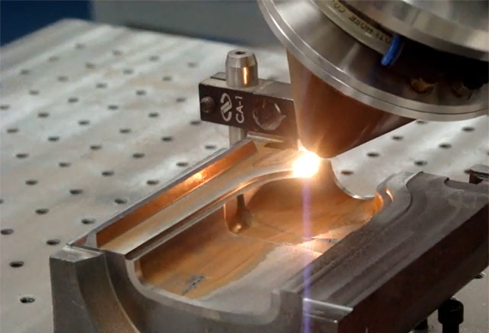Deep analysis of laser welding machine: a comprehensive guide from principle to process optimization
With the rapid development of the manufacturing industry, laser welding machines, as the core equipment of modern precision machining, have become standard tools in high-end manufacturing fields such as automobiles, electronics, aerospace, etc. due to their advantages of high precision, high efficiency, and low pollution. This article will provide a systematic interpretation from the perspectives of technical principles and process optimization, to construct a complete knowledge system of laser welding for readers, and to deeply analyze how to achieve comprehensive improvement in welding quality through scientific regulation.
The essence of laser welding is to rapidly melt and form metallurgical bonds on the surface of the processed material through a local high-temperature heat source generated by a high-energy density laser beam. The core lies in how to accurately control the three elements of beam energy, focusing position, and motion trajectory. There are significant differences in power output, wavelength characteristics, and applicable scenarios between the current mainstream CO ₂ lasers and fiber lasers: the former is suitable for thick plate cutting and deep penetration welding, while the latter is better at precision micro welding and non-ferrous metal processing. Choosing a suitable laser source requires comprehensive consideration of parameters such as material thickness, thermal conductivity, and production efficiency. For example, in the welding of 3C product shells, the fast response characteristics of fiber lasers can effectively reduce the heat affected zone and improve the surface smoothness of the weld seam.
Process optimization is the key path for upgrading laser welding technology. Research has shown that when the welding speed is increased to 20m/min or above, while the heat input decreases by 30%, the porosity defect rate may increase by 5% -8%. This requires dynamic adjustment of power and scanning frequency through a real-time closed-loop control system. For lightweight materials such as aluminum magnesium alloys, the use of pulsed laser welding mode can significantly suppress the generation of hot cracks. The principle is to control the solidification rate of the molten pool through high-frequency pulse waveform. In addition, the optimization of gas protection strategy is also crucial. The content of oxide inclusions can be reduced to below 0.05% under a nitrogen atmosphere, while a mixed argon environment is more suitable for the deoxidation requirements during stainless steel welding.
In the context of intelligent transformation, laser welding machines are gradually integrating into the Industry 4.0 ecosystem. The adaptive welding platform equipped with a machine vision system can detect weld morphology with a precision of 0.1 μ m and achieve micrometer level compensation correction. The process database based on deep learning can predict the optimal parameter combination based on historical data, reducing the debugging cycle by more than 60%. It is worth noting that the energy efficiency performance of laser welding equipment directly affects long-term operating costs. The use of waste heat recovery technology and modular design can reduce energy consumption by 40% and annual maintenance costs by 25%.

As a leading enterprise in the field of laser welding in China, Shenzhen Haiwei Laser Technology Co., Ltd. has been deeply involved in the industry for 15 years. Its independently developed 10000 watt fiber laser welding system has passed the German T Ü V certification and has made breakthrough applications in fields such as welding of new energy battery modules and manufacturing of high-speed rail bogies. Its unique dynamic focus compensation technology can achieve infinite focusing within a range of ± 50mm, and with the self-developed intelligent path planning algorithm, it greatly improves the welding consistency of complex surfaces. At present, Haiwei Laser has established a service network covering the whole country, providing full chain services from scheme design, equipment selection to process verification, helping customers improve production efficiency by an average of more than 30%.
Laser welding technology is driving the manufacturing industry towards greater precision and efficiency, and the depth of process optimization depends on a deep understanding of the physical essence and sustained investment in technological innovation. Choosing suppliers with core technological capabilities is not only the key to obtaining high-quality equipment, but also an important guarantee for obtaining complete solutions and lasting technical support. In the wave of intelligent manufacturing, enterprises that master the core technology of laser welding will surely win broader development space.
Recent Posts
- What are the advantages of laser welding machines in lithium battery pack production lines?
- What issues should be noted when choosing a lithium battery pack production line?
- Quality Inspection and Control of Lithium Battery Module Pack Production Line
- Cell grouping and sorting process in lithium battery module pack production line
- What are the safety hazards of lithium battery pack production lines and how can they be prevented?
INQUIRY

